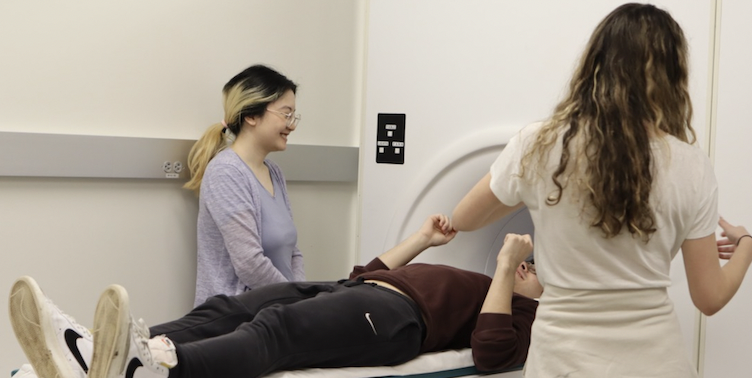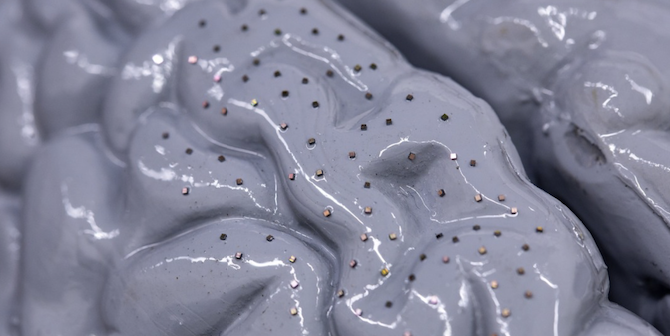The Amazing Brain: Carney researchers win NIH video contest
Researchers affiliated with Brown University's Carney Institute for Brain Science have won the 2021 National Institutes of Health “Show Us Your BRAINs!” contest for a video highlighting efforts to help people with the most severe and hard-to-treat form of obsessive-compulsive disorder (OCD).
The winners of the “Show Us Your BRAINs!” photo and video contest are chosen each year based on their eye-catching ability to capture the creative spirit of the Brain Research through Advancing Innovative Neurotechnologies® (BRAIN) Initiative, according to a statement on the NIH Director's Blog.
Nicole Provenza, a Ph.D. candidate in the lab of Brown associate professor David Borton, and Evan Dastin-van Rijn, a 2021 Brown graduate and a research assistant in the Borton Lab, produced the video in collaboration with researchers at Baylor College of Medicine in Houston and MGH/HST Martinos Center for Biomedical Imaging in Charlestown, MA. The video showcases a 360-degree view of the brain of a person with severe OCD, a psychiatric illness marked by recurrent unwanted thoughts and repetitive behaviors.
The video shows the brain of a participant in a clinical trial to alleviate OCD symptoms using deep brain stimulation (DBS). In DBS, electrodes are implanted deep in the brain to deliver electrical impulses that regulate abnormal, repetitive brain impulses. The purple straight lines in the video are wire leads, each bearing a single electrode topped with an electrical contact (shown in white). These leads connect to a pacemaker-like device implanted in the chest (not depicted in the video) that delivers electrical impulses that ease the patient’s distressing thoughts and unwanted behaviors.
Approximately 15 seconds into the video, the brain’s outer surface fades away to reveal the critical brain structures that serve as landmarks for targeting the disorder. These include the anterior commissure (shown in orange), which helps to transfer information between the brain’s two hemispheres; the caudate nucleus (dark blue), which is involved in various higher neurological functions such as learning and memory; the putamen (light blue), which plays a role in learning and motor control; and the ventral striatum (yellow), a part of the brain’s circuitry for decision-making and reward-related behavior.
The team produced the video to help explain how DBS works for people with OCD, but they say the visualizations are helping them to see where exactly in the brain electrodes have been placed during surgery in each of their study participants.
The video was produced by Provenza who received Sc.B. and Sc.M. degrees in biomedical engineering from Brown; Dastin-van Rijn, who received a Sc.B. in biomedical engineering and neuroscience from Brown; Wayne Goodman, the study’s principal investigator and lead psychiatrist at Baylor College of Medicine; Sameer Sheth, co-investigator and associate professor at Baylor College of Medicine; Raissa Mathura, research coordinator in Sheth’s laboratory; Kelly Bijanki, assistant professor at Baylor College of Medicine; and Noam Peled, faculty at MGH/HST Martinos Center for Biomedical Imaging.
Visit the NIH Director's Blog for a full description of the award and more information about the video.



